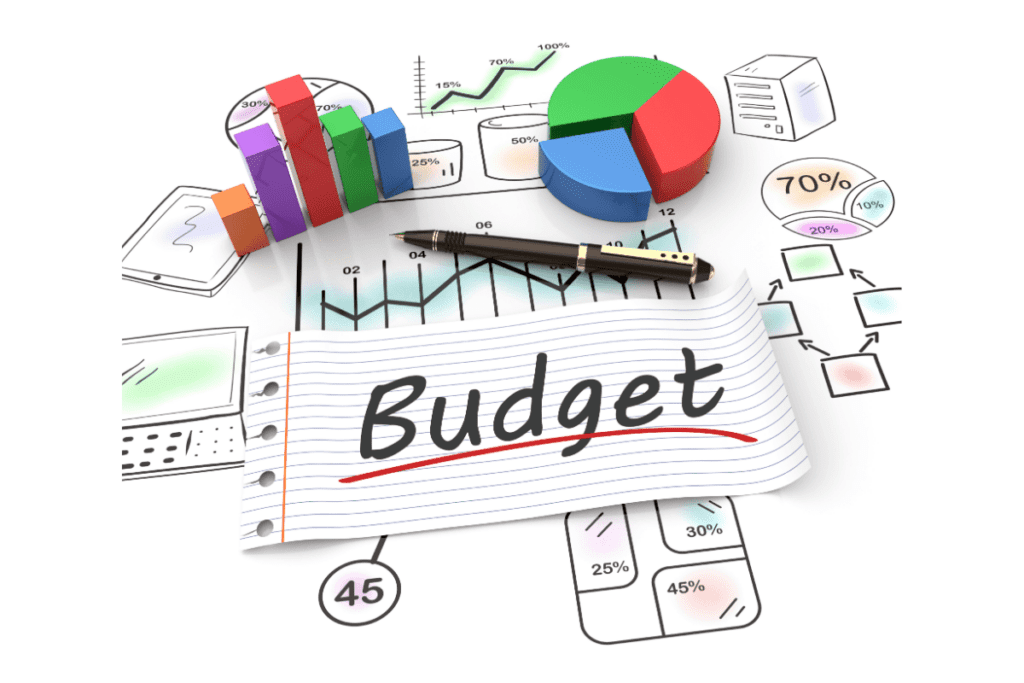Project Cost Estimation and Budgeting Techniques
Introduction
Project costs can feel like a jigsaw puzzle, complex and overwhelming, impacting the success of your project. Surprisingly, effective cost estimation and budgeting techniques could mitigate this issue substantially.
This article will illuminate essential methods for estimating project costs and creating an efficient budget to keep your projects in check financially. Intrigued? Read on to discover how these strategies can pave the way to successful project outcomes!
Key Takeaways
- Project cost estimation is the process of determining the anticipated expenses involved in a project, and it can be done using various techniques such as analogous estimating, parametric estimating, and bottom-up estimating.
- Accurate project cost estimation and budgeting are crucial for successful project management as they allow for financial control, resource optimization, and determination of project feasibility.
- Different methods can be used to estimate costs and budgets, including expert judgment, three-point estimating, reserve analysis, cost of quality analysis, top-down estimating, and bottom-up estimating.
- Each method has its advantages and should be chosen based on factors such as project complexity, available data, accuracy requirements. Utilizing specialized software for cost estimation can also streamline the process.
What is Project Cost Estimation?
Project cost estimation is the process of determining the projected expenses involved in a project, including labor, materials, and other resources necessary to complete the project successfully.
Techniques used for project cost estimation
Project managers and team members utilize various techniques to estimate project costs accurately and efficiently. These techniques provide a clearer understanding of the financial implications a project holds.
1. Analogous Estimating: This technique leverages the cost elements from previous, similar projects as a basis for predicting costs for current projects.
2. Parametric Estimating: This approach involves using statistical relationships between variables. For instance, per-unit costs might be used to calculate overall costs based on the number of units required.
3. Bottom-up Estimating: A highly accurate method, it involves estimating the cost of individual tasks or work packages and adding them up to form an overall cost estimate.
4. Expert Judgment: As noted in our important facts, expert judgment is key in the estimation process because experienced professionals can use their knowledge to predict potential project costs.
5. Three-Point Estimating: This technique considers three scenarios—most likely, optimistic, and pessimistic—to provide a more realistic cost estimate that accounts for risks and uncertainties.
6. Reserve Analysis: It involves creating a contingency reserve by estimating possible extra costs such as additional resources or unforeseen problems that may occur during the project’s execution phase.
7. Cost of Quality: This method entails analyzing all costs related to ensuring quality deliverables such as prevention, appraisal, failure costs, etc., which are vital in projecting overall project expenses.
Analogous estimating
Analogous estimating is a project cost estimation technique that relies on historical data from similar projects to estimate the current project’s costs. It involves comparing the current project with past projects that have similar characteristics, such as scope, size, and complexity.
By analyzing the budget and actual costs of these previous projects, you can make an educated guess about how much your current project will cost.
This method is especially useful when little information or data is available for the current project. Although it may not provide precise cost estimates, analogous estimating provides a quick and rough estimation of costs based on similarities between projects.
This technique offers a starting point for developing budgets and serves as a basis for more accurate estimations later in the project lifecycle.
Parametric estimating
Parametric estimating is a cost estimation technique that relies on historical data and mathematical models to estimate project costs. It involves using pre-defined formulas or parameters to calculate the cost based on specific project attributes, such as size, complexity, or volume.
By analyzing past projects with similar characteristics, parametric estimating allows for a more accurate prediction of costs compared to other estimation techniques. This method is especially useful when there is limited information available or when time constraints prevent more detailed estimations.
Parametric estimating helps project managers make informed decisions about budget allocation and resource planning by providing reliable cost estimates based on established patterns and benchmarks.
Bottom-up estimating
Bottom-up estimating is a project cost estimation technique that involves breaking down the project into smaller components and estimating the costs of each individual item. This method requires a detailed analysis of all the tasks, sub-tasks, and resources involved in the project.
By estimating the costs at this granular level, it provides a more accurate picture of the overall budget required. Bottom-up estimating takes into account specific quantities, materials, labor hours, equipment costs, and other factors to calculate the total expenses for each component.
This approach is particularly useful when there are unique or complex elements in a project that cannot be easily estimated using other techniques. It ensures that no cost is overlooked or underestimated during budget planning and allows for better control over financial aspects throughout the project lifecycle.
Importance of Project Cost Estimation and Budgeting in Project Management
Accurate project cost estimation and budgeting are crucial for successful project management. By considering key elements and using various estimation methods, you can ensure financial control, optimize resources, and determine the feasibility of your project.
Don’t miss out on understanding the importance of cost estimation and budgeting in achieving project success.
Key elements of cost estimation in project management
- Accurate estimation of project costs is crucial for effective project management and budgeting.
- The key elements of cost estimation include identifying all the resources and activities required for the project.
- Cost estimation also involves considering the labor, materials, equipment, and any other expenses necessary to complete the project.
- Estimating indirect costs such as overhead expenses and contingency allowances is another important element of cost estimation.
- Proper documentation and record keeping are essential for cost estimation, allowing for accurate tracking and analysis of project costs.
- Expert judgment and historical data play vital roles in estimating costs accurately.
- Regular monitoring and adjustment of cost estimates throughout the project lifecycle help ensure that financial goals are met.
- Effective communication with stakeholders is critical during the cost estimation process to align expectations and manage budget constraints.
- In addition to estimating initial project costs, ongoing cost forecasting allows for proactive planning and risk mitigation strategies.
- Cost estimation should be an iterative process that benefits from continuous improvement based on lessons learned from past projects.
Budgeting and cost estimation techniques
Estimating costs and budgets is a crucial aspect of project management. There are various methods and techniques that can be used to estimate the costs and budgets of a project. Here are some different methods for estimating costs and budgets:
1. Expert Judgment: This method involves seeking input from experts in the field who have experience with similar projects. Their expertise and knowledge can help in determining realistic cost estimates.
2. Three-Point Estimation: This technique uses an optimistic, pessimistic, and most likely scenario to estimate costs. By considering these three scenarios, a more accurate estimate can be derived.
3. Reserve Analysis: Reserve analysis involves setting aside contingency reserves to account for any unforeseen costs or risks that may arise during the project. It helps in managing uncertainties and mitigating potential budget overruns.
4. Cost of Quality: This approach accounts for the cost required to ensure that quality standards are met throughout the project lifecycle. It includes prevention, appraisal, and failure costs associated with maintaining quality.
5. Analogous Estimating: Also known as top-down estimating, this method relies on historical data from previous similar projects to estimate costs and budgets for the current project. It provides a quick estimation based on past experiences.
6. Parametric Estimating: This technique involves using statistical relationships between historical data and project variables to estimate costs and budgets accurately. It considers factors such as size, complexity, and productivity rates.
7. Vendor Bid Analysis: When working with external vendors or suppliers, analyzing their bids can provide insights into market prices for specific deliverables or services required for the project.
8. Delphi Method: The Delphi method is a consensus-based estimation technique that involves obtaining anonymous opinions from experts through multiple rounds of questioning and feedback. It helps in reducing biases and arriving at reliable estimates.
9. Bottom-Up Estimating: In this method, each component or task within a project is estimated individually, allowing for a more detailed breakdown of costs and budgets. These individual estimates are then aggregated to get the total project estimate.
10. Cost Estimation Software: Utilizing specialized cost estimation software can streamline the process by automating calculations, generating reports, and providing real-time updates as variables change.
Top-down estimating
Top-down estimating is a project cost estimation technique that involves starting with the overall project budget and then allocating funds to individual tasks or work packages. This approach allows for a quick and high-level estimation of costs based on historical data, industry standards, or expert judgment.
It is particularly useful in the early stages of project planning when detailed information may be limited. By working from the top-down, project managers can get an overview of how much each component of the project will cost and make informed decisions about resource allocation.
This method helps in setting realistic expectations for stakeholders and provides a baseline for further cost refinement throughout the project lifecycle.
Three-point estimating
Three-point estimating is a project cost estimation technique that takes into account possible variations in the duration or cost of a task. It involves providing three estimates: the best-case scenario, the worst-case scenario, and the most likely scenario.
These estimates are then used to calculate an average value for each task. By considering different possibilities, three-point estimating helps to create a more realistic budget and allows for contingency planning.
This technique is particularly useful when there is uncertainty surrounding certain aspects of a project and can help prevent unexpected costs or delays from derailing the project’s progress.
Cost of quality
Cost of quality is an important aspect to consider in project cost estimation and budgeting. It refers to the total sum of costs incurred throughout a project’s lifecycle due to poor quality.
These costs can include expenses related to rework, defects, customer dissatisfaction, and even lost business opportunities.
By factoring in the cost of quality during project cost estimation, businesses gain insight into the potential financial implications of delivering low-quality products or services.
This enables them to allocate appropriate resources for maintaining and improving quality standards, thus reducing future costs associated with poor quality.
Understanding the cost of quality helps organizations prioritize investments in quality control measures and prevention activities that can ultimately lead to enhanced customer satisfaction, minimized waste, increased profitability, and successful project outcomes.
Expert judgment
Expert judgment is a crucial technique used in project cost estimation and budgeting. It involves seeking advice and insights from individuals who have extensive experience and expertise in the field.
These experts can provide valuable input to assess risks, evaluate costs, and determine the feasibility of a project. Their knowledge allows for more accurate estimates, as they draw on their past experiences to identify potential challenges and opportunities that may impact costs.
By leveraging expert judgment, project managers can make informed decisions about resource allocation and budget planning, leading to better overall project outcomes.
Reserve analysis
Reserve analysis is a crucial technique used in project cost estimation and budgeting. It involves identifying and allocating funds for uncertainties or risks that may arise during the project.
By setting aside reserves, it helps mitigate potential cost overruns and ensures financial control throughout the project’s lifecycle. Reserve analysis considers both known risks, which can be estimated based on historical data or expert judgment, as well as unknown risks that are difficult to anticipate.
This technique allows project managers to proactively plan for unforeseen events and maintain a realistic budget that accommodates changes or unexpected expenses. By incorporating reserve analysis into their cost estimation process, project teams can better manage financial resources and deliver projects within budget constraints.
How to Estimate Project Costs and Create a Budget
To estimate project costs and create a budget, you need to follow a series of steps that include gathering accurate data, breaking down the project into smaller components, and utilizing dynamic project costing tools to calculate expenses throughout the project lifecycle.
Steps for estimating project costs
Estimating project costs requires careful consideration of various factors. Here are the steps to follow:
1. Identify project requirements: Understand the scope and objectives of the project, including deliverables, timelines, and quality expectations.
2. Breakdown tasks: Divide the project into smaller, manageable tasks or work packages. This will help in estimating costs more accurately.
3. Estimate resource requirements: Determine the types and quantities of resources needed for each task, such as labor, materials, equipment, and subcontractors.
4. Gather cost data: Collect historical cost information from similar projects or use industry benchmarks to estimate the costs of resources required.
5. Calculate labor costs: Determine the hours required for each task and multiply them by the hourly rates of the personnel involved. Account for overtime, benefits, and any other applicable costs.
6. Assess material costs: Identify the materials needed for the project and estimate their quantities. Then, determine their unit prices and calculate the total material cost.
7. Evaluate equipment costs: Consider any equipment rentals or purchases necessary for completing specific tasks. Calculate depreciation costs if using existing equipment.
8. Include overhead expenses: Allocate a portion of indirect costs (e.g., administrative expenses, utilities) to each task based on their percentage contribution to the overall project.
9. Account for contingency funds: Add a buffer amount to account for unforeseen risks or changes that may impact project costs (typically 10-15% of estimated total).
10. Calculate total project cost: Sum up all estimated costs from individual tasks to determine the overall budget required for the project.
Use of dynamic project costing tools
Dynamic project costing tools are essential for accurate project cost estimation and budgeting. These tools provide the capability to analyze costs at different levels of detail, allowing project managers to allocate resources efficiently.
With dynamic project costing tools, you can easily track and monitor actual costs against estimated expenses in real-time. This helps in identifying any deviations from the planned budget and enables proactive measures to be taken, such as making adjustments or implementing cost-saving strategies.
By utilizing these sophisticated tools, you can ensure that your project stays on track financially and minimize the risk of overspending or underestimating costs.
Free project cost estimation template
One valuable resource for estimating project costs is a free project cost estimation template. This template provides a structured framework for calculating the various expenses associated with a project, such as labor, materials, and any other relevant costs.
It allows you to input the necessary information and automatically calculates the total estimated cost for your project. By using this template, you can save time and effort in manually calculating costs and ensure that your estimates are accurate.
With an easy-to-use format, this free template simplifies the process of cost estimation and helps you create a reliable budget for your projects.
Example of project cost estimation
One example of project cost estimation is the use of a dynamic project costing tool. These tools allow project managers to input various factors such as labor costs, material expenses, and overheads to calculate the total budget required for a project.
The tool takes into account different variables and provides accurate estimates based on historical data and industry benchmarks. This example shows how technology can streamline the cost estimation process, making it more efficient and reliable.
By using such tools, project managers can get a clear picture of the financial resources needed for their projects, enabling better planning and decision-making throughout the entire project lifecycle.
Conclusion
In conclusion, mastering project cost estimation and budgeting techniques is crucial for successful project management.
By utilizing various methods such as analogous estimating, three-point estimating, and reserve analysis, you can accurately predict and allocate funds to ensure project profitability.
Remember that accurate cost estimation leads to effective budget planning, resource allocation, and ultimately project success. So, make sure to invest time in understanding these techniques and utilize the available tools to optimize your project’s financial control.
If you liked this article, remember to subscribe to MiamiCloud.com. Connect. Learn. Innovate.
FAQs
1. How can I accurately estimate project costs?
Accurately estimating project costs involves breaking down the project into smaller tasks, identifying the resources needed for each task, considering labor and material costs, accounting for potential risks and uncertainties, and using historical data or industry benchmarks as a reference.
2. What are some common budgeting techniques used in project management?
Common budgeting techniques in project management include top-down budgeting (allocating an overall budget to different areas of the project), bottom-up budgeting (estimating individual task costs and aggregating them), contingency budgeting (setting aside a reserve fund for unexpected expenses), and zero-based budgeting (requiring justification for every expense).
3. How do I handle cost overruns during a project?
Handling cost overruns requires proactive monitoring of expenditure throughout the project, identifying deviations from the original budget early on, analyzing the causes of these deviations, reassessing priorities if necessary, seeking approval for additional funds if required, and making adjustments to future planning to avoid further overruns.
4. What is earned value management (EVM) in cost estimation?
Earned value management is a technique that integrates measurements of scope, schedule, and resource performance to assess how efficiently work is being accomplished in relation to its planned value. This approach allows for better tracking of actual progress against projected costs and helps identify potential issues before they become significant problems.








